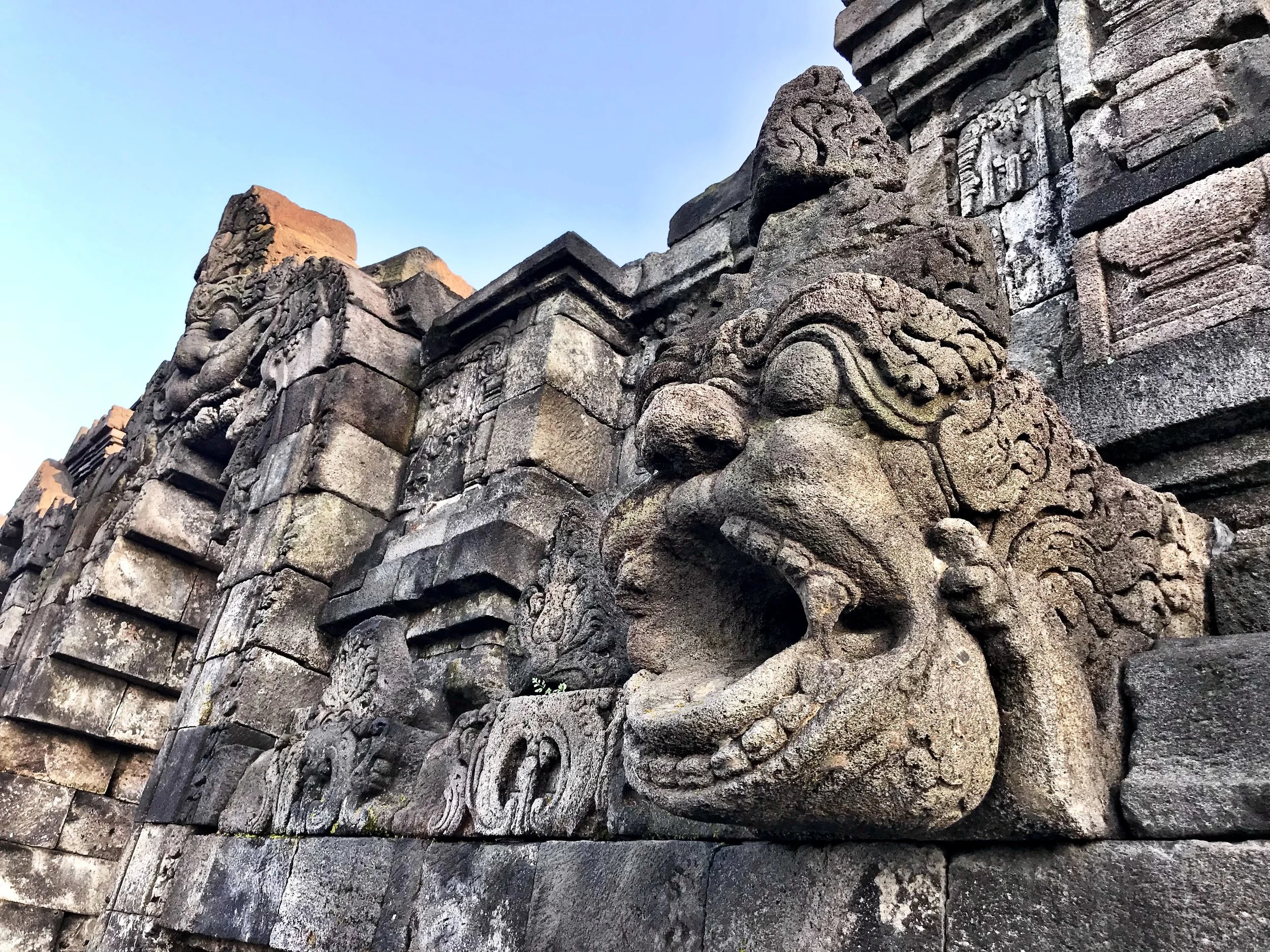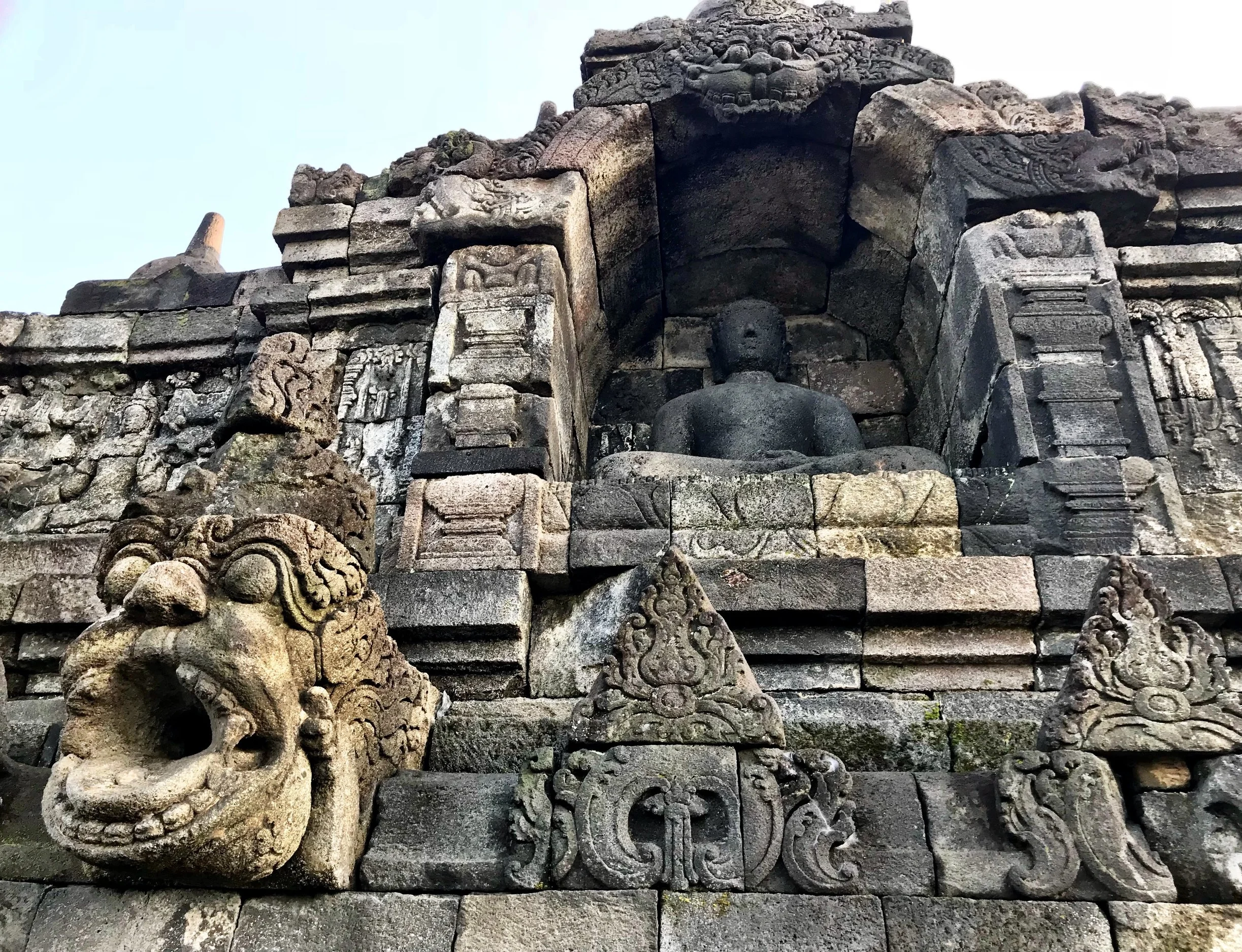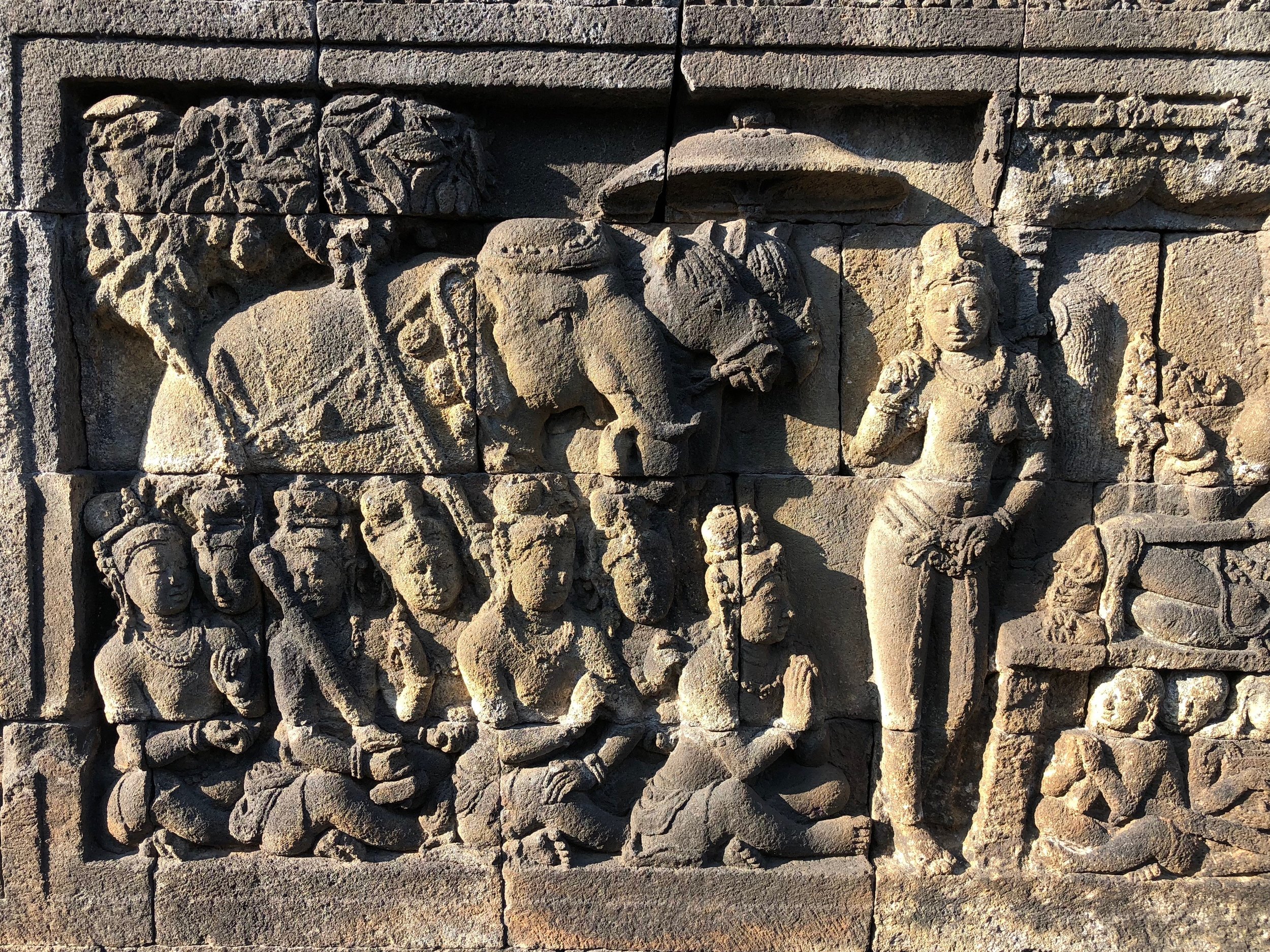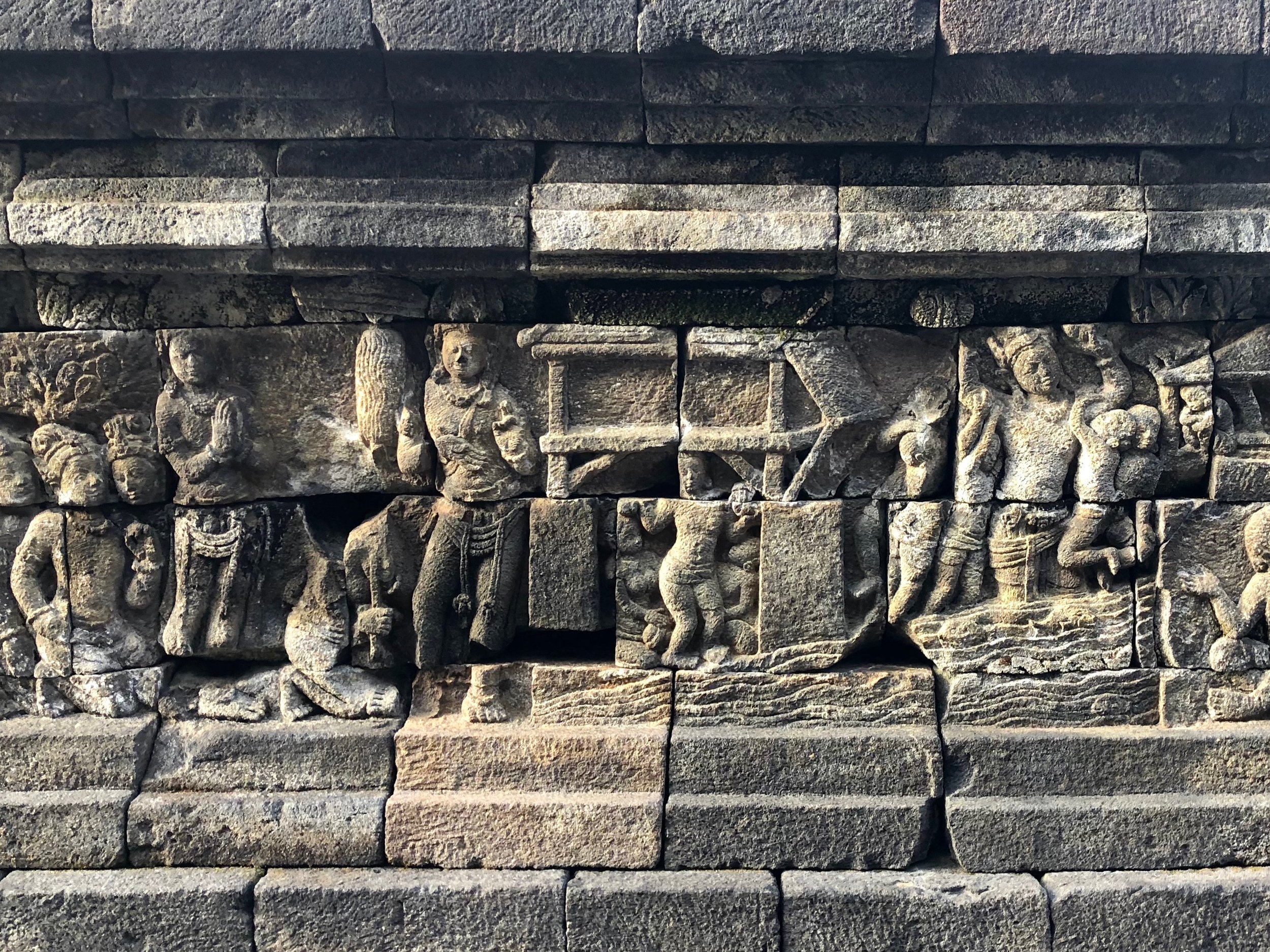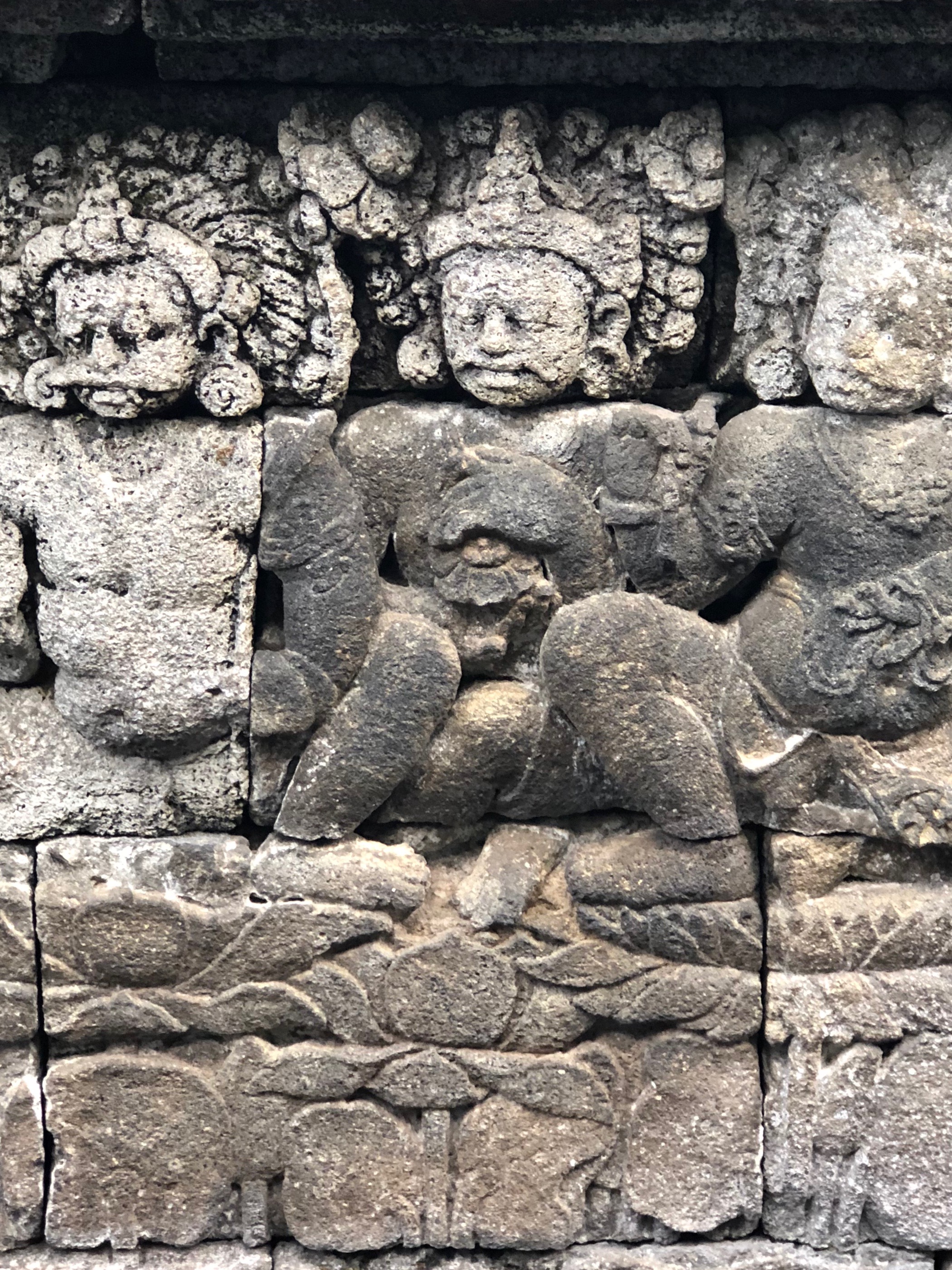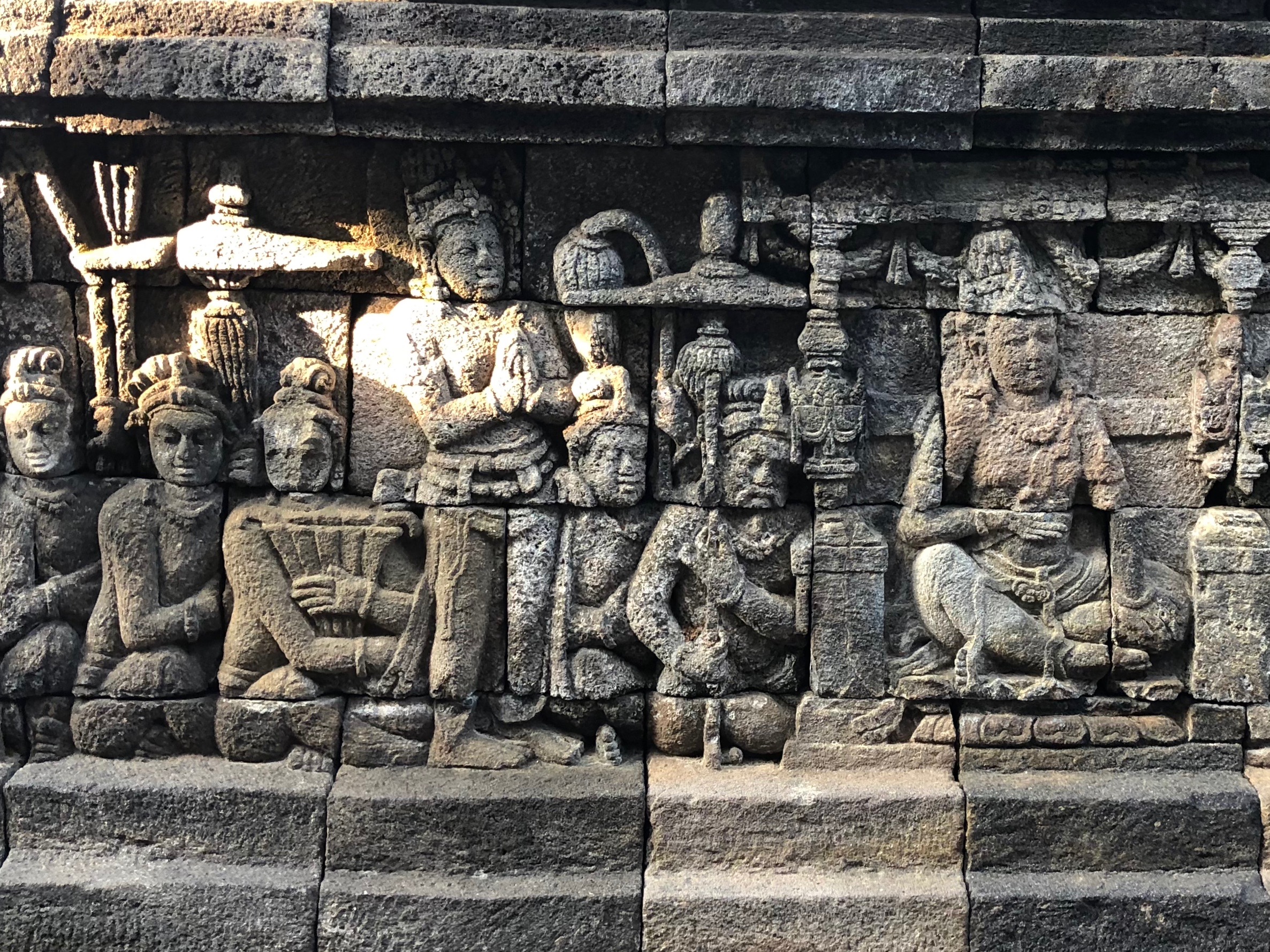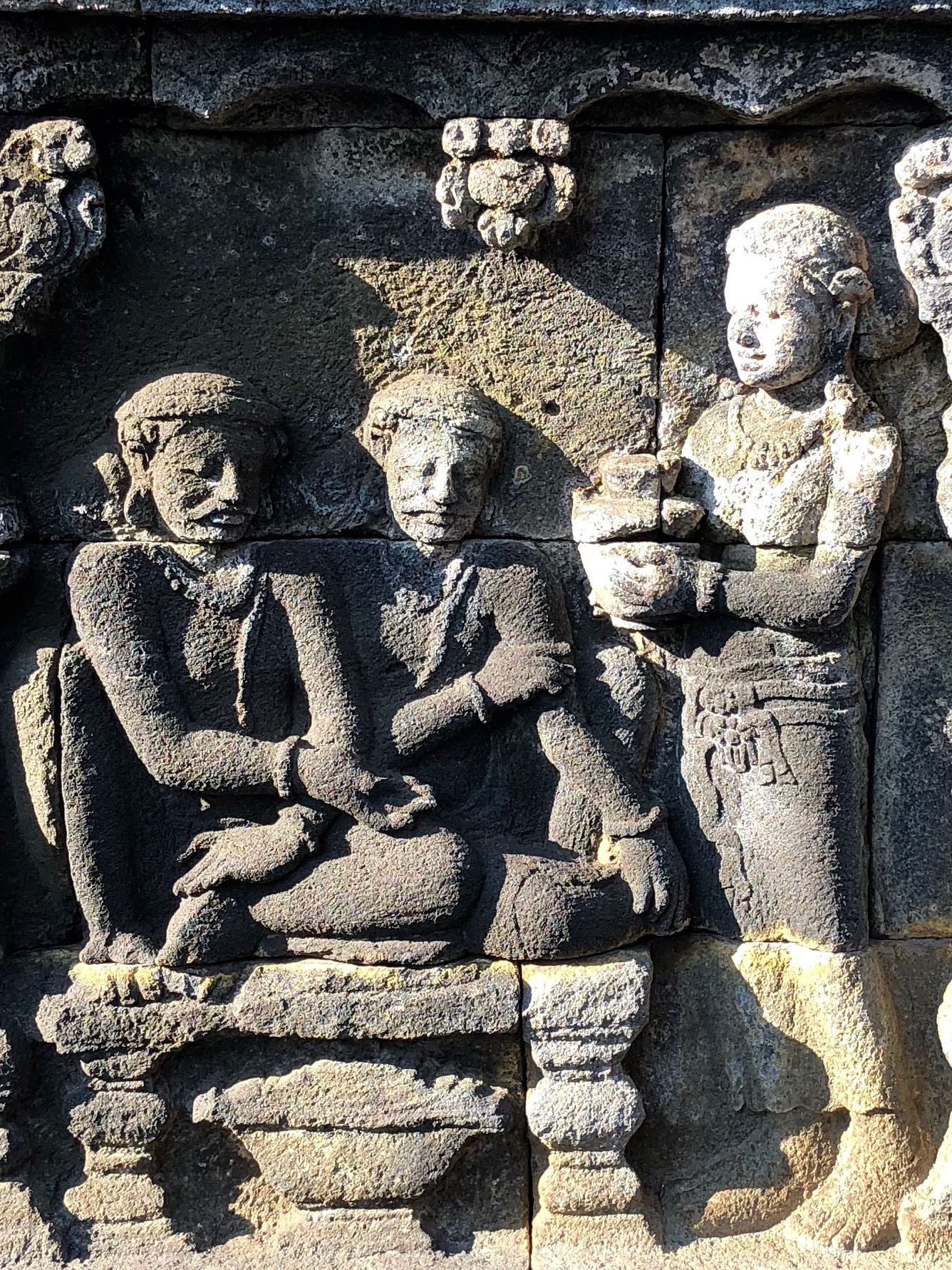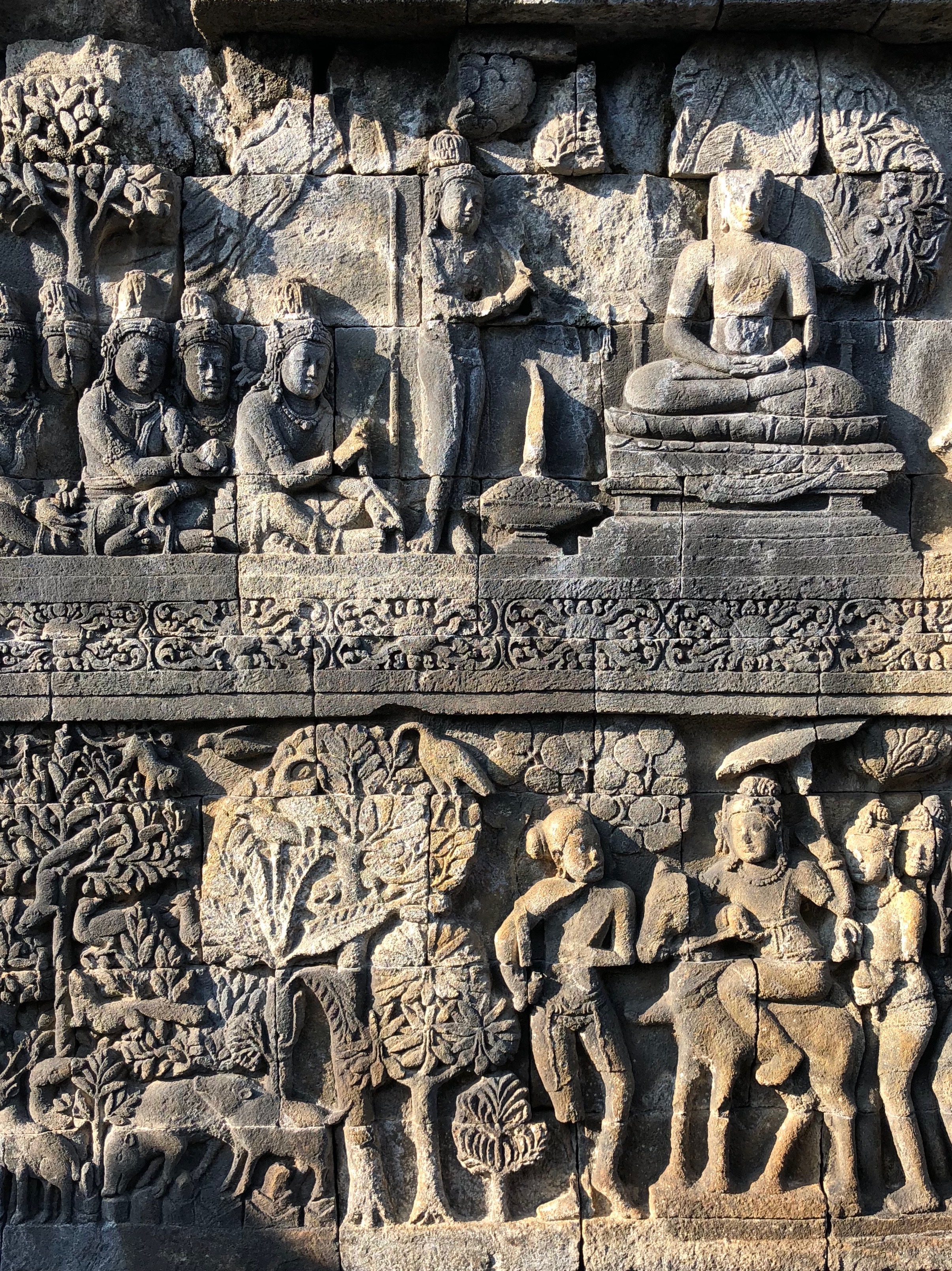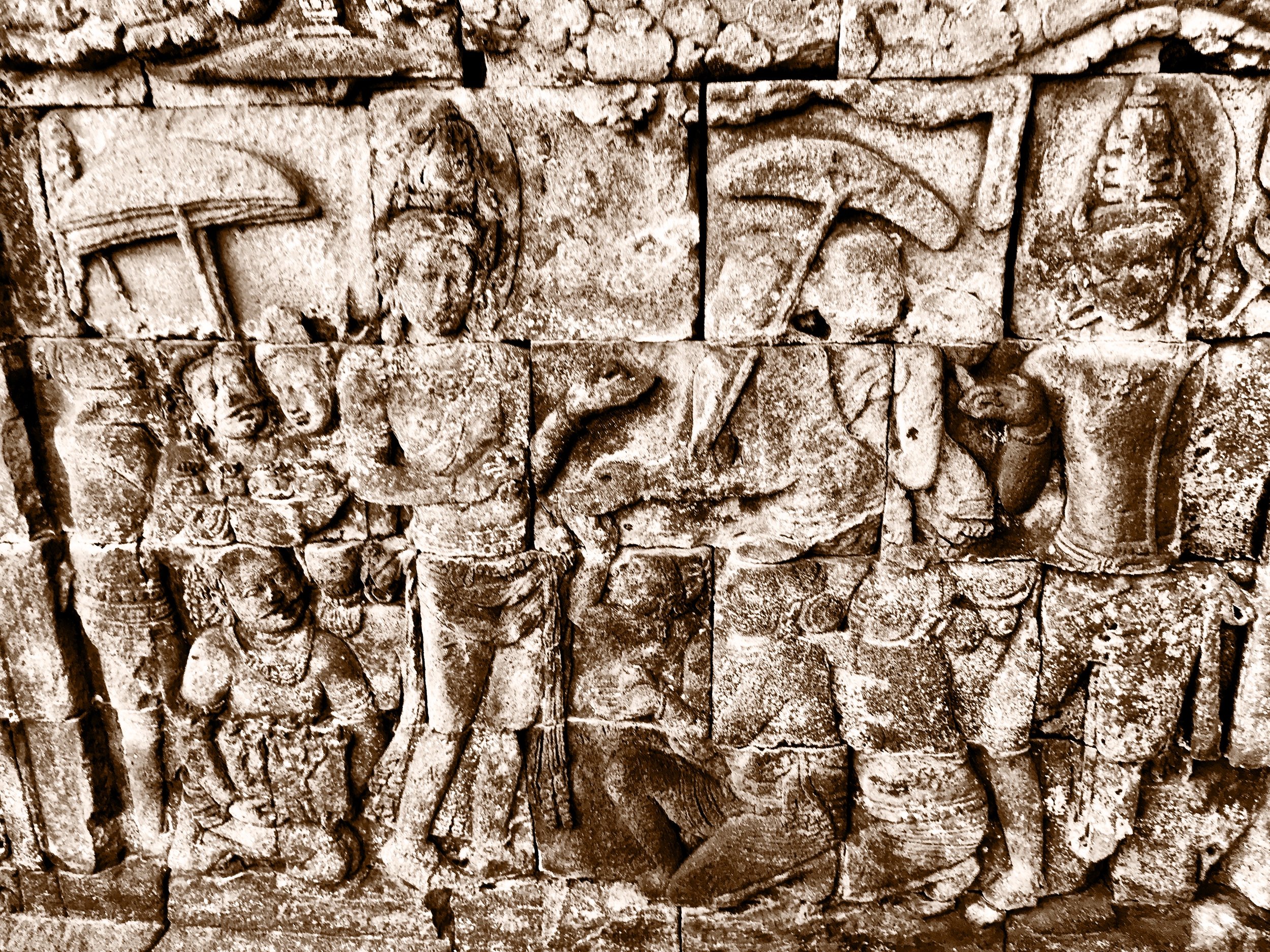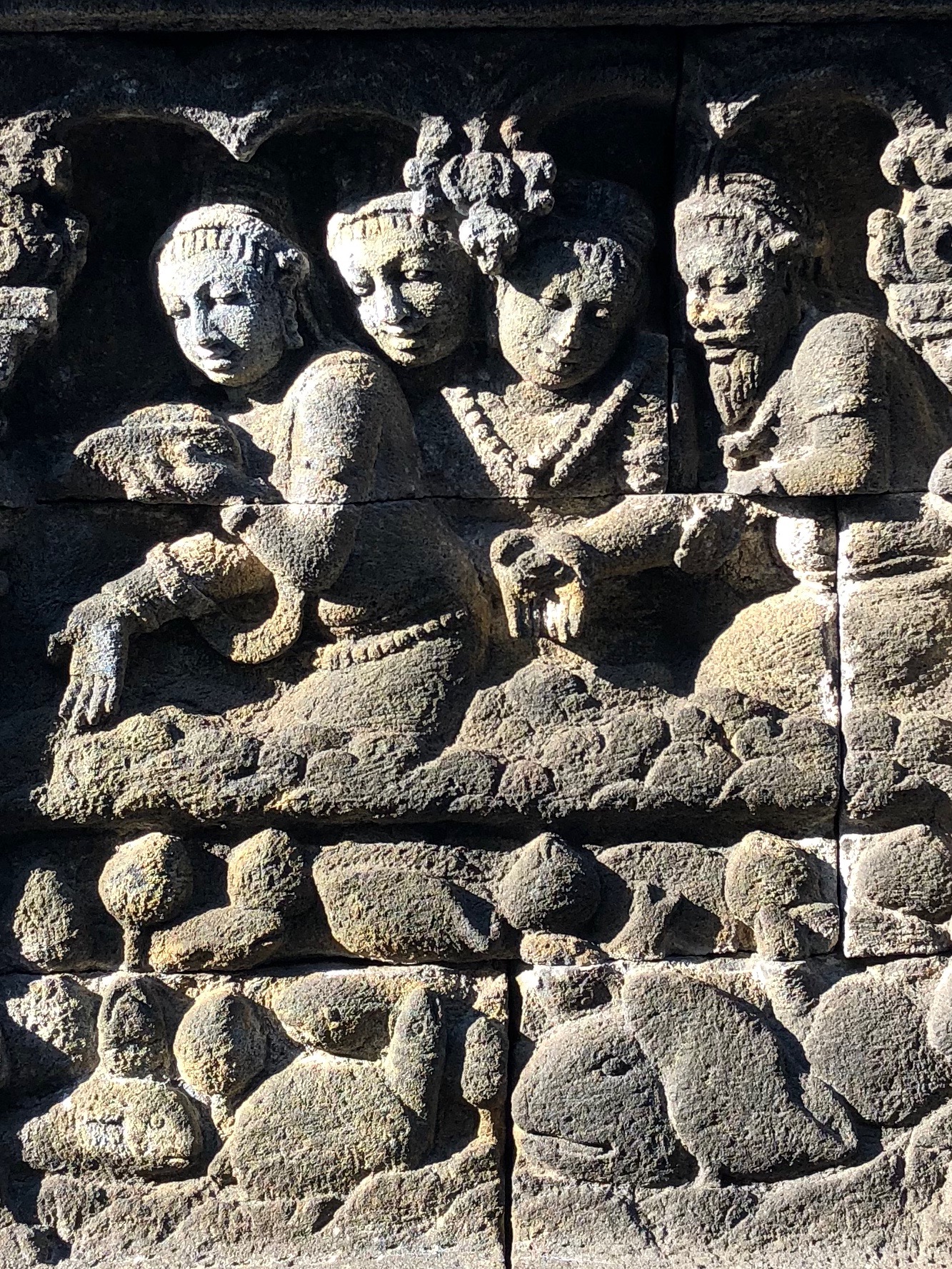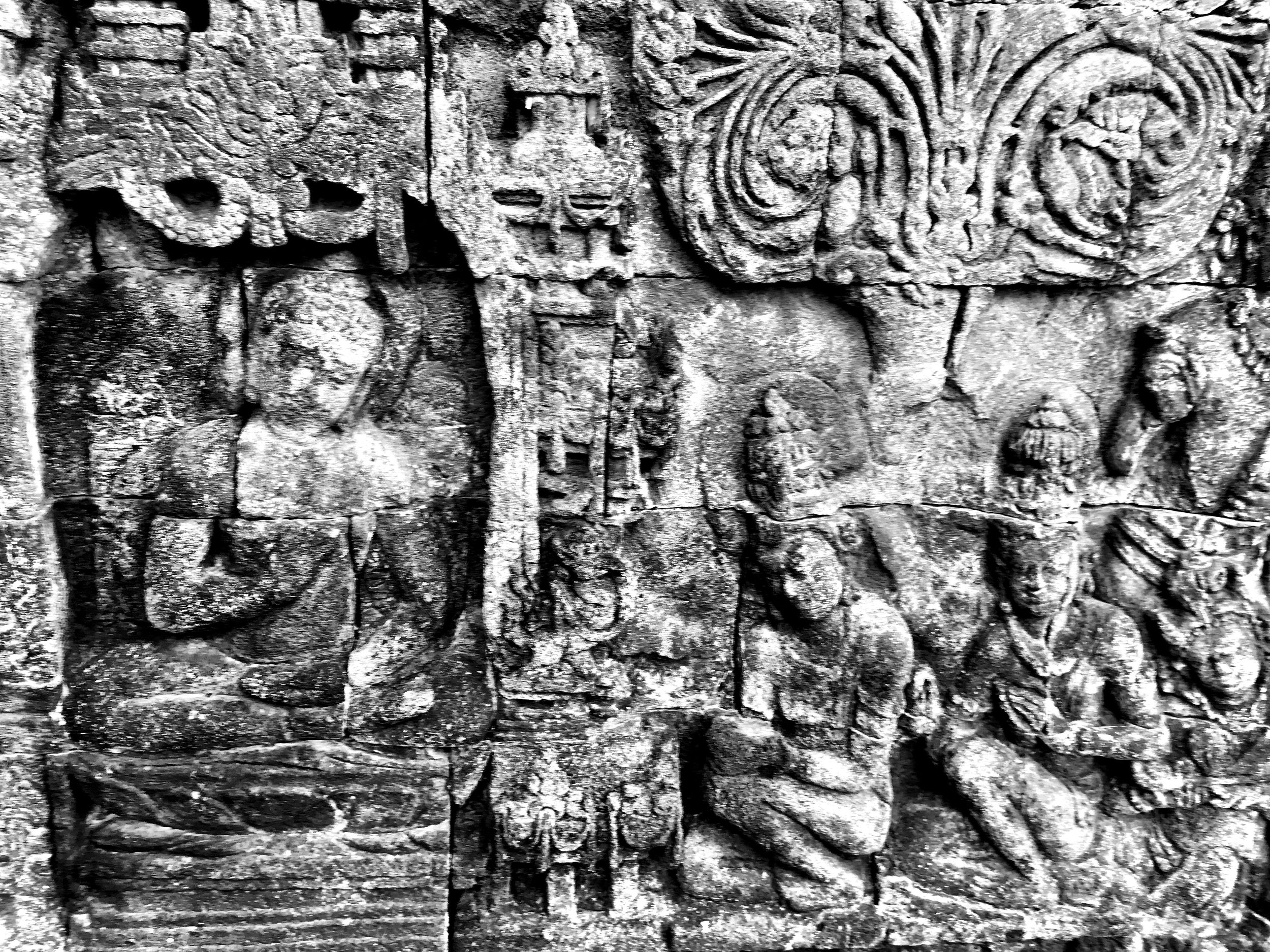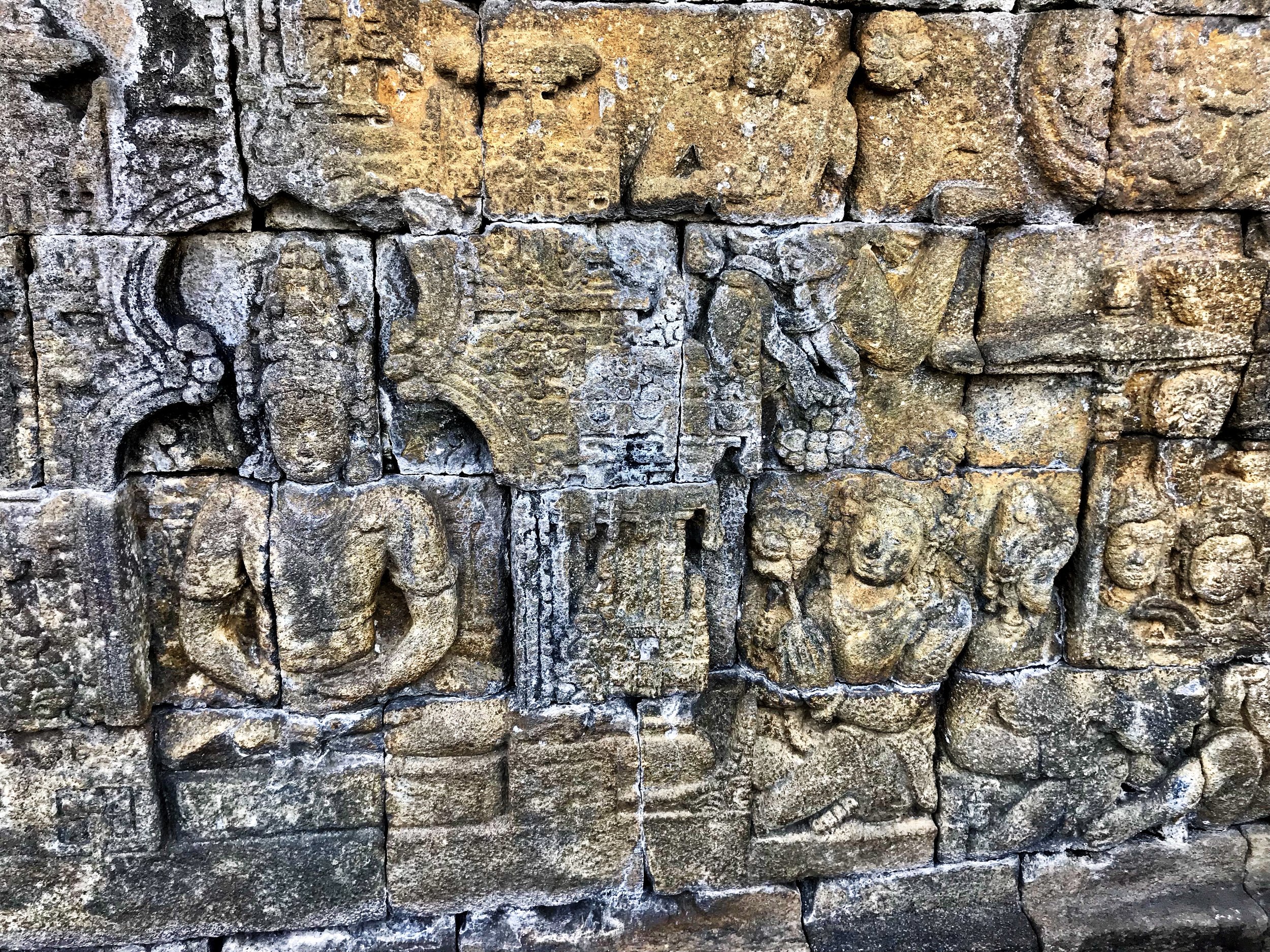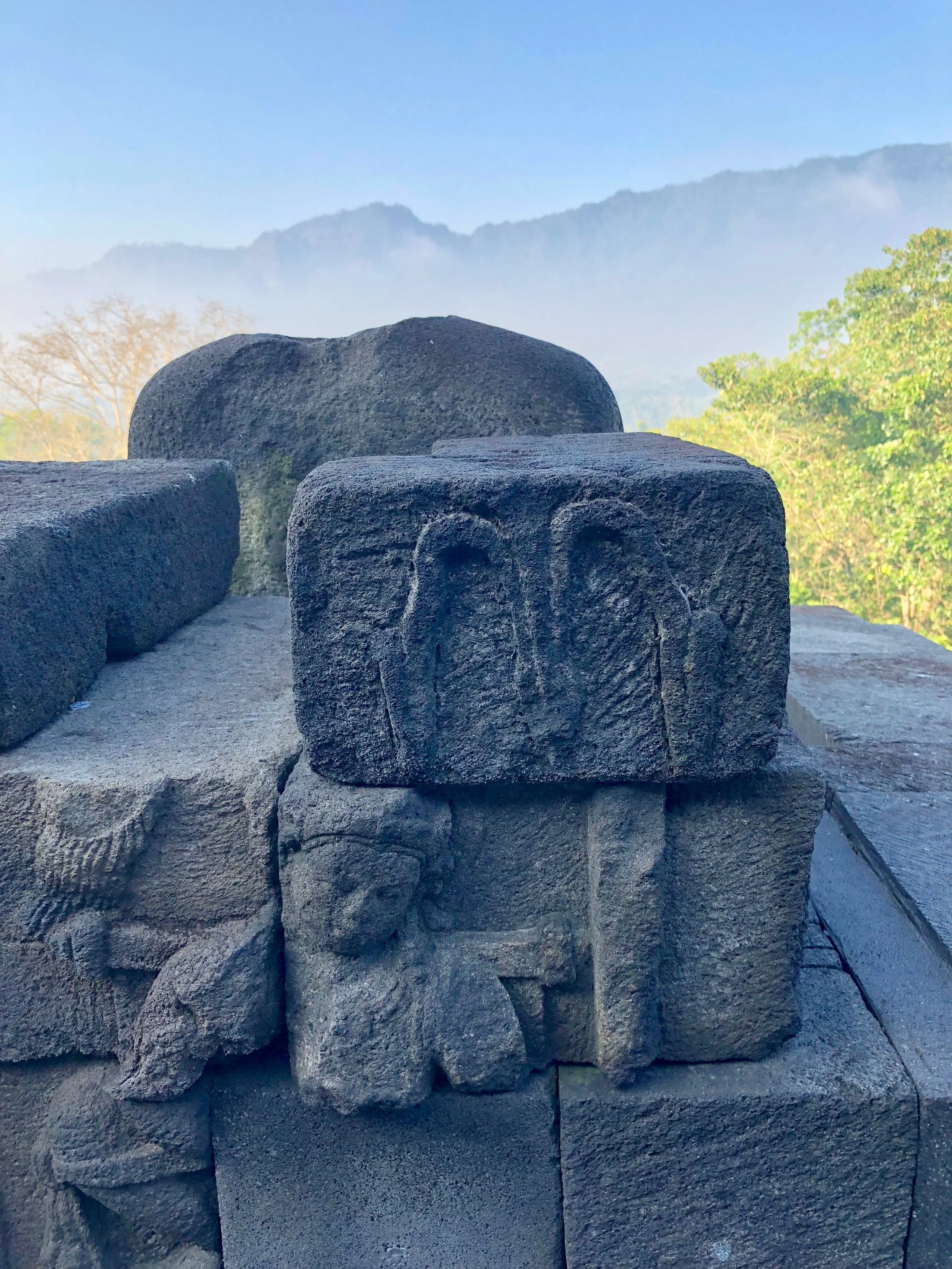A walk-through of the Borobudur temple carvings that depict the lives of the Buddha as told in the Jataka tales and Avadana.
The carvings on some of the levels of Borobudur tell the story of the Buddha as well as his past reincarnations
The incomparable 9th century Mahayana Buddhist sanctuary of Borobudur in Java, Indonesia contains the largest collection of decorative panels recounting the life of the Buddha. The structure rests upon an oversized base, and the body of the monument is composed of six raised platforms, including five terraced galleries. They’re square in form and diminish in scale with height. The uppermost trio of circular terraces are plain in comparison, but are augmented by 72 magnificent stone lattice-work stupas rising to the stupa on the summit. Because Borobudur has no inner chambers, it is considered a pilgrimage site.
The builders of Borobudur recognized the need for a drainage system because of heavy rains that cause erosion
Pilgrims would have entered via the eastern stairs to ritually circumambulate (a fancy word for walking around) the sacred manmade mountain of chiseled gray andesite in quiet contemplation. It's here that the stories told in the narrative relief panels begin, with the birth of the future Buddha, Prince Siddhartha Gautama. According to legend, the infant stood and took seven steps. With each step, a lotus flower appeared, to prevent his tiny feet from touching the ground.
The corridors are filled with detailed murals depicting celestial beings, guardian demons, conch shells, jewel trees, durian fruit and a menagerie of animals, including elephants, deer and tree-dwelling monkeys, to name a few.
Animals are depicted in the carvings — including many that tell of the past lives of the Buddha
Open to the sky, the bas-reliefs adorning the 13-foot-wide passages create a broad platform and are read from left to right, moving in a clockwise direction around the monument, twisting in right angles from one terrace to another. The galleries represent the planes of existence that must be experienced before reaching the uppermost level of spiritual perfection.
Story Time: Jataka and Avadana
The first- and second-level stone reliefs depict tales from Buddhist lore, including the Jataka and Avadana. Wally and I had first seen these stories depicted in the frescoes of the Ajanta Caves in India.
The Jataka tales are about the Buddha before he was born as Prince Siddhartha. Thematically, they illustrate lessons in morality, karma and merit that distinguished the bodhisattva from all other creatures. As a bodhisattva, the Buddha was born and reborn numerous times, alternating from human to animal form, before he finally attained enlightenment.
Avadana are similar to Jataka, but the main figure is not the Buddha himself — the saintly deeds are attributed to other legendary people.
We didn’t experience the reliefs in chronological order, as our guide, Pras, led us down from the upper terraces, after we watched the sunrise.
We paused on the stairway to admire one of the ornate archways depicting the fearsome face and open mouth of Kala.
According to folklore, Kala was created by the god Shiva to eradicate demons, though he’s sometimes identified himself as a demon named Rahu, who is said to have swallowed the universe, only to release it after being decapitated by the gods.
Be careful when crossing through arches formed by the mouth of Kala — his jaw is said to snap shut on those who have evil in their hearts
Locals like to joke that the stone at the top depicts the golden arches of McDonald’s
Why Many Buddhists Are Vegetarian
Pras pointed out a notable tale depicted in one of the panels known as The Hare’s Sacrifice. The bodhisattva was born as a hare. His closest friends were an otter, a jackal and a monkey. He continuously urged his friends to strive for right conduct and to be generous in their daily life. Wanting to put the hare to the test, the god Sakra appeared in the forest in the shape of a brahman who had lost his way and was starving. The otter brought seven fish, the jackal a lizard, and the monkey ripe fruits. The hare, however, couldn’t offer anything. The brahman lit a fire for an offering — and immediately the hare jumped in, offering himself as a meal. The king of the gods admired the saintly deed, and while resuming his own shape, he praised the hare for his self-sacrifice.
Pras explained that this was why many Buddhists are vegetarian, as they would not like to think that they are eating someone who may have been reborn as an animal. –Duke
Be sure to check out the carvings as you explore the multi-story Borobudur Temple in Java, Indonesia
Borobudur Temple
Jl. Badrawati
Kw. Candi Borobudur
Borobudur, Magelang
Jawa Tengah
Indonesia
